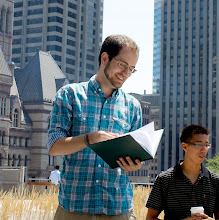Here's a Vision of Green Prosperity
A Vision of Green Prosperity. What's Yours?
The announced closure of the last Dow Chemical facilities in Sarnia raises serious issues and questions for the future of this city. The situation places a call to the citizens of Sarnia, one that poses a question of direction.
It struck residents off-guard who thought that Dow would always exist in some form in The Valley.
Perhaps the most serious challenge we face as a community is economic diversification. This has been talked about a lot lately and progress is being made. I believe the idea must permeate decision-making at various levels, by a diverse array of groups and individuals.
The truth is that with various future realities related to international trade, resource use and sustainability, we will need to face serious choices because plants may keep shutting down.
We should be all be painting a picture of what we want this city to look like. After that, we can look at the means of getting there (using various measures like local economic development, marketing, by-laws, advocacy, entrepreneurial spirit, etc.) I challenge those running for City Council to each present their vision. It may be optimistic or idealistic at first, but there's no better way to move towards a goal.
My portrait of the future? A Sarnia with a good new hospital and quality health care - with a focus on prevention and healthier, active residents. A city with a great expanse of natural areas, especially at schools, with children and adults swarming to our parks. Less travel by car, but a strong network of buses and trails filled with people walking and riding by bike, rollerblades, wheelchairs, skateboards and scooters.
I see public beaches along the lake that never need bacterial pollution cautions and a clean Sarnia Bay. A vibrant downtown with urban planning and development that builds the city’s core, includes green roofs and urban agriculture, and store owners who are kept busy selling local products within a green economy. A multicultural centre with a vibrant, united arts community. New industry, spread throughout the city, with people providing needed services for each other. Clean air, and downriver water fit to drink and swim in, any day of the week.
Unfortunately, I don’t paint in the golden colour of cornfields for the production of ethanol. As the premier opened a new plant in Sarnia last week, many farmers were there to express concern. Studies show that it takes more energy to produce ethanol than what it produces, because of the fossil fuels used at farming and other stages. We don’t actually have enough land to make a dent in air emissions from automobiles, and so it is not feasible as a climate change strategy.
My vision sees more consumers puchasing their crops locally, and people strongly supporting their community farmers during this transition.
Sounds like a fun and constructive exercise. Without looking at the "how to" just yet, why not pause for a few moments to think about, and write your vision for the future of this city. It might help to draw it first. Maybe elicit the thoughts of a child. Send in what you have in a letter to the editor of this newspaper. Impress me!
-------------------
Darcy Higgins is a native of Sarnia who is currently completing a degree in Environmental Studies. He can be reached by e-mail at darcyhiggins@gmail.com

